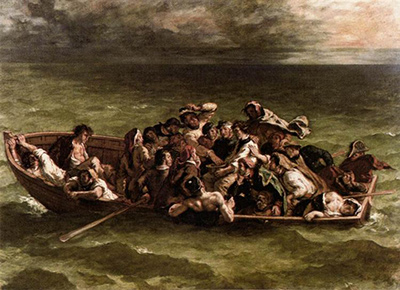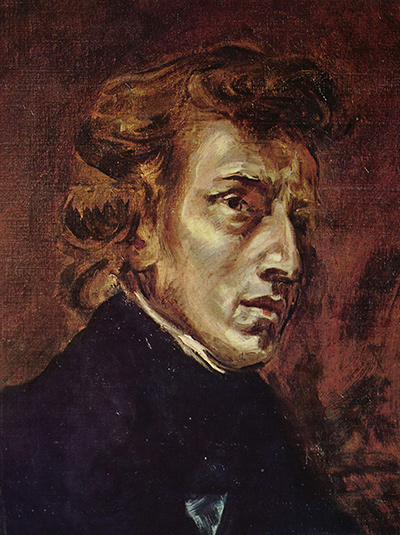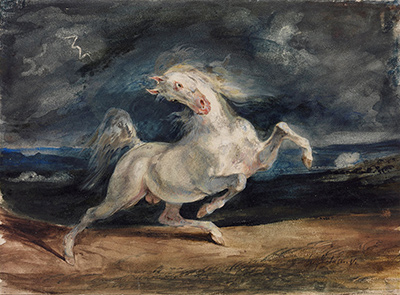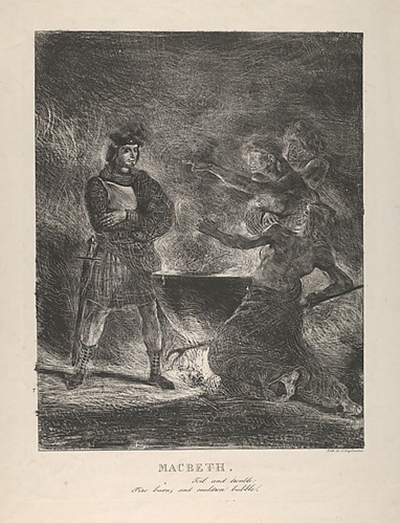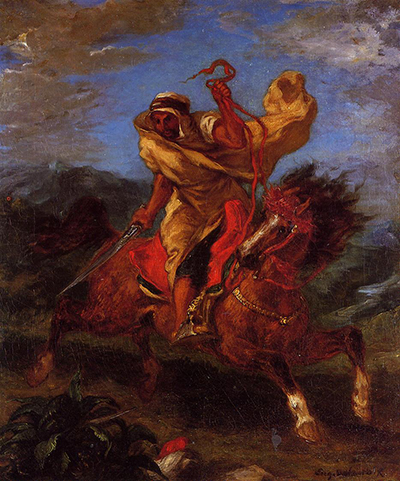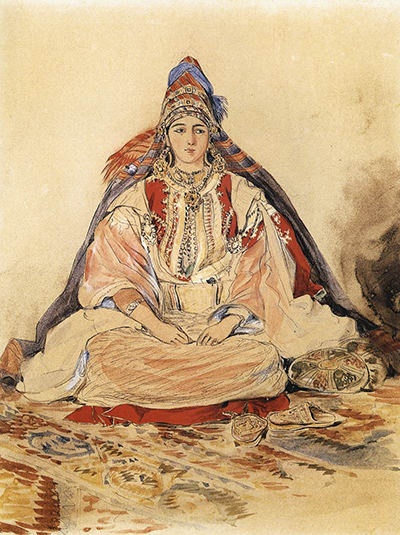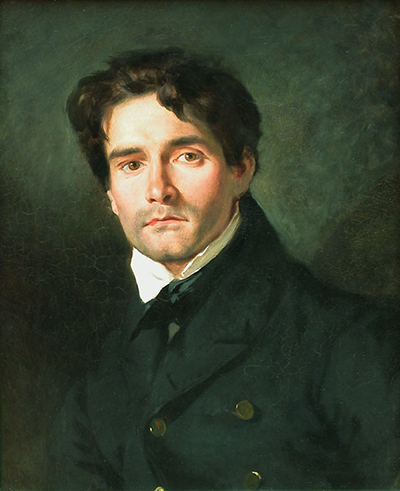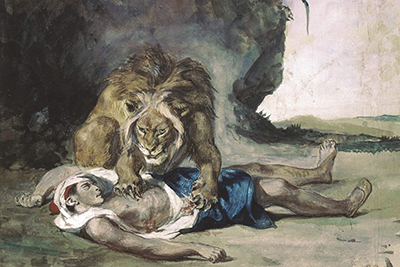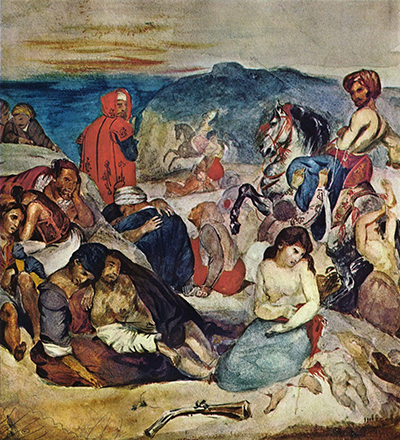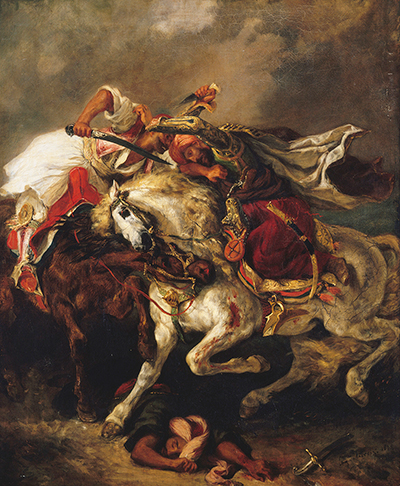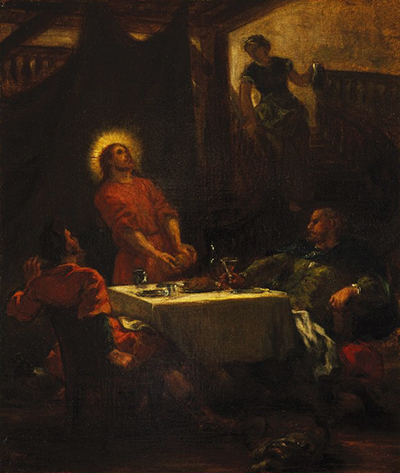Romantic painters such as Delacroix were part of a complex philosophical movement, involving the literary, visual, and intellectual arts. Delacroix's masterpieces profoundly shaped the work of the Impressionists, whilst his passion for the exotic inspired the protagonists of the Symbolist movement. The artist’s importance was not limited to his artworks; his diary, first published between 1893 and 1895, was much admired as an expression of artistic purpose and practice. Throughout his career he cultivated a reputation as a free thinker, consumed by creativity and inspiration. Together, Delacroix's paintings, writings, and self-perception shaped the future of modern painting. Delacroix was also a famous lithographer, and was able to produce exquisite illustrations of the works of esteemed literary geniuses including William Shakespeare, Johann Wolfgang von Goethe and Walter Scott.
The artist gained inspiration from the work of Peter Paul Rubens and Titian. He also focused on movement and colour in his masterpieces, instead of emphasising on outlines and forms. Prior to that, the frescos of Da Vinci and Michelangelo would also have been significant. As evident in his paintings, most of his work was of a romantic or dramatic nature. He was influenced by the works of Lord Byron, who was better known for incorporating sublime forces in his creations. He was to become part of a movement which remains one of France's most significant, and also contributed the likes of Theodore Gericault, and titles such as The Raft of the Medusa. This was all a part of the new wave of French art that swept through after the political turbulence across the nation had started to subside. Previously to that, it was the likes of Jacques Louis David who had ruled supreme, but his Neo-Classical approach was now deemed stale and old fashioned, with the Romanticists more readily embraced.
Having been inspired by various literature and music within his career, Delacroix would eventually turn to travel too in order to discover new cultures that potentially could herald in whole new avenues of expression. During the 19th century it was Islamic and Japanese culture that seemed to be the most alluring. Delacroix himself would travel to first Spain, and then onto North Africa in 1832. Orientalism was a major movement during that century and it would inspire around one hundred paintings and drawings in this artist's career alone. That was a wealth of aesthetic interest to enjoy here, from fashion to architecture. Many French art enthusiasts would only understand these cultures from the visual work of artists such as this, with travel being a real luxury at that time. A number of other artists would also find inspiration within this region, including Gerome who is perhaps the most famous of those to have worked in the Orientalist style. Some of his portraits would be hard to organise because of the traditional nature of these nations who would not encourage women to model openly, though he was able to find some cities that were less strict in order to portray local people.
Delacroix became known as a primary figure in the new Romantic art style. Some art critics, however, considered his manner of presenting suffering as somewhat controversial. By 1826, Delacroix began to explore other painting techniques, and created romantic artworks with varied themes. In 1825, he began creating lithographs that illustrated Shakespeare and paintings by Goethe. Woman with the Parrot and The Combat of the Giaour and Hassan, which he painted in 1826 and 1827 presented the recurring themes of sensuality and violence. In 1832, Delacroix travelled to Spain and North Africa, as part of a diplomatic mission to Morocco shortly after the French conquered Algeria. His mission was to study art, but also to escape from Paris, in hope of seeing a more primitive culture.
He eventually produced over 100 paintings and drawings of scenes from or based on the life of the Moroccan people, and added his own chapter in the history of Orientalism. The people and their costumes captivated Delacroix. The trip would inform the subject matter of a great many of his future paintings. He saw a parallel between the Moroccan outlook and attire and that of the Romans and those from ancient Greece. Animals – a symbol of romantic passion – were incorporated into paintings such as Arab Horses Fighting in a Stable (1860), The Lion Hunt (of which there exists many versions, painted between 1856 and 1861), and Arab Saddling his horse (1855). He would produce large numbers of portrait paintings that captured local life in ways that many in France had never seen before, certainly not in person.
With Death of Sardanapalus created in 1827, it was the artist’s careful selection of exotic colours and strong brushstrokes, which made the painting truly special. In his later career, he became one of the most distinguished mural painters in the history of French art. Jacob Wrestling with the Angel and The Expulsion of Heliodorus from the Temple are among the deepest expressions of his decorative richness of colour and impressive structural integration. His influence, particularly through his use of colour, was genius, inspiring Pierre-Auguste Renoir, Vincent Van Gogh, and Pablo Picasso, among other famous artists. This period of art was almost a link between the earlier traditional styles and later contemporary art, making it an essential chapter in the development of art history.








